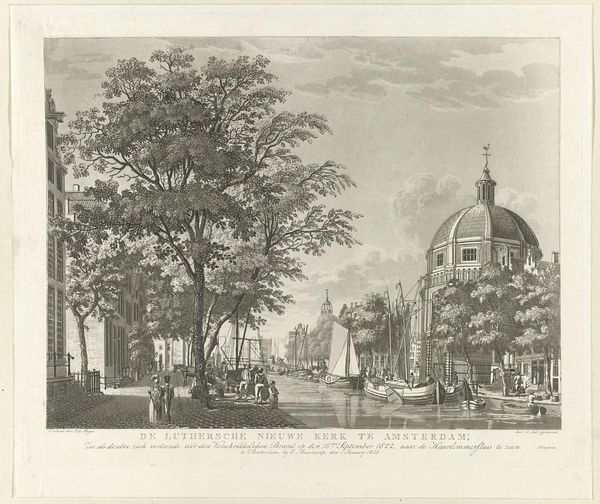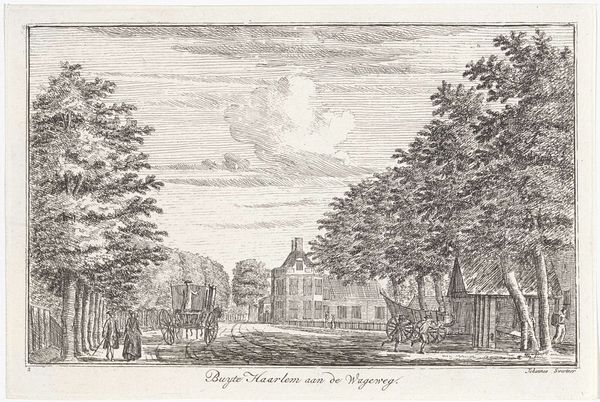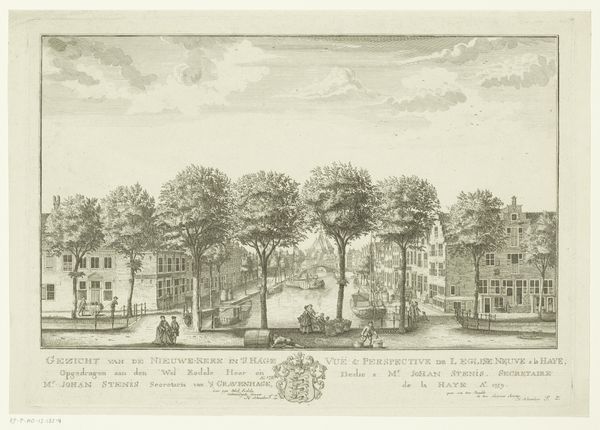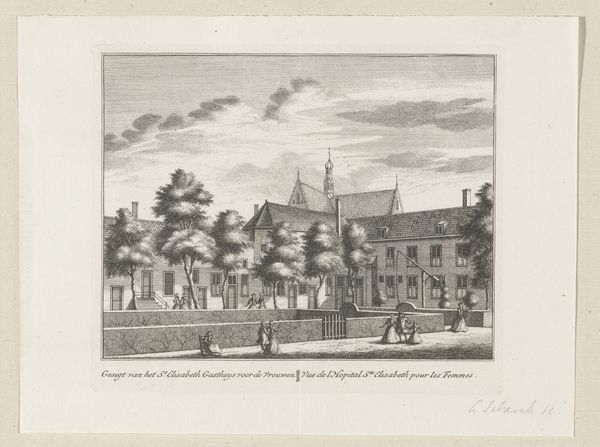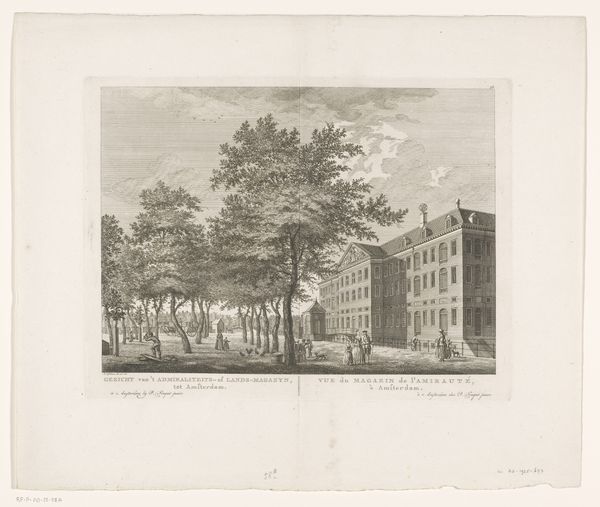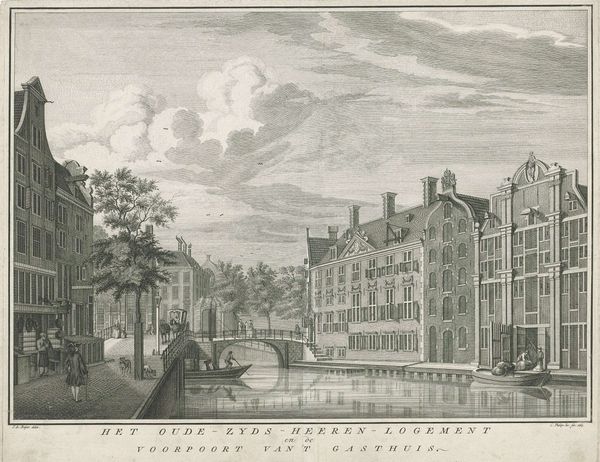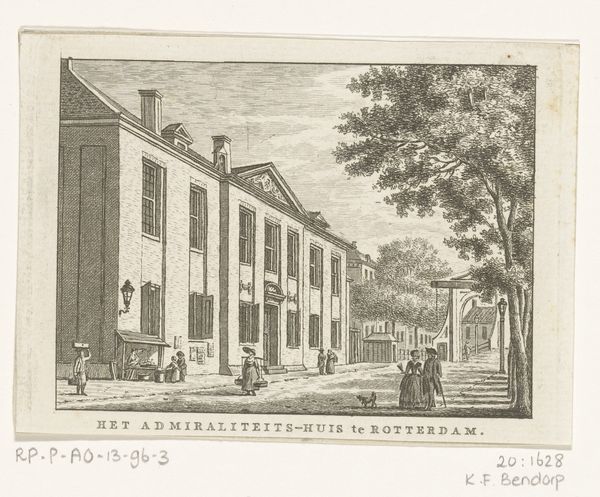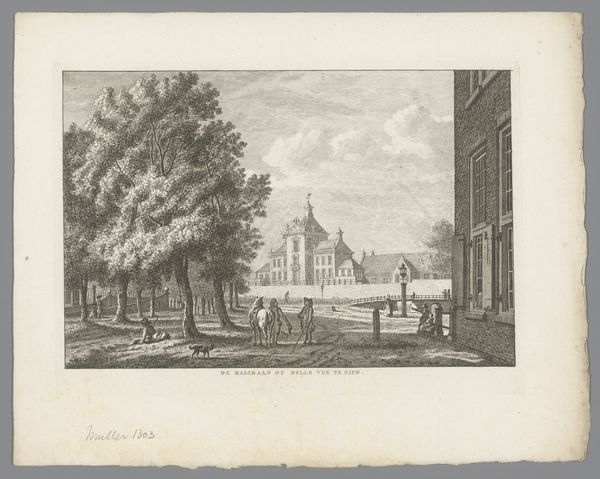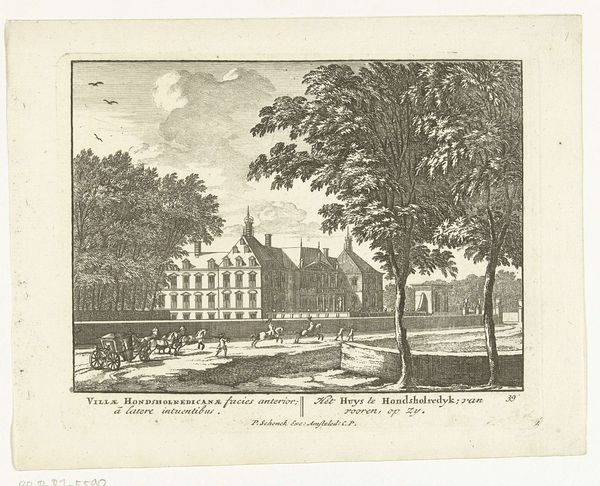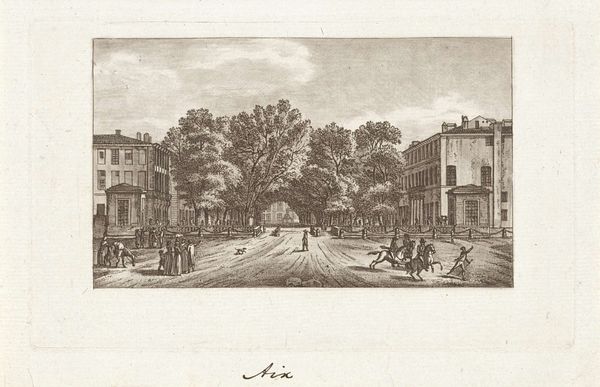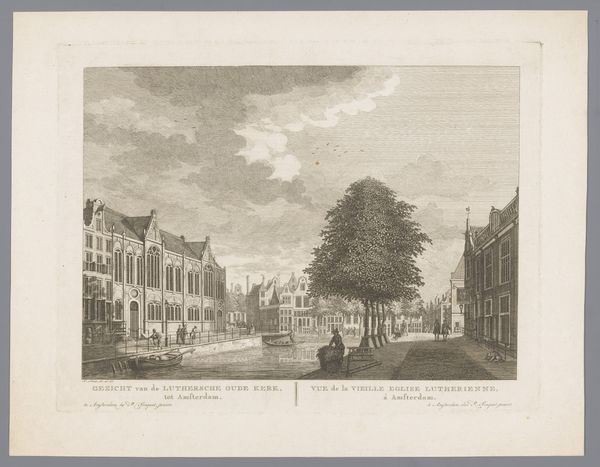
print, etching, engraving
#
baroque
#
dutch-golden-age
# print
#
etching
#
landscape
#
perspective
#
cityscape
#
engraving
Dimensions: height 268 mm, width 418 mm
Copyright: Rijks Museum: Open Domain
Editor: Here we have "Gezicht vanaf de Korte Vijverberg te Den Haag" – a cityscape print using etching and engraving techniques, made sometime between 1747 and 1765 by Paulus Constantijn la Fargue. There’s something almost cinematic about the long perspective of this street scene. What do you see in this piece? Curator: This cityscape offers us a window into 18th-century Dutch society and its urban planning. Notice the clear social stratification, visualized through the architecture. On one side we have these grand buildings that speak to wealth and power. But who built and maintained them? Editor: I hadn’t considered that! So, the artist's choice of perspective, focusing on these imposing structures, might be a commentary on social inequalities. Curator: Precisely. Consider who is centered within this composition? The wealthy are noticeably absent while othered and unacknowledged servants fulfill essential, but invisible roles, supporting their lavish lifestyle. And, where are women? How are they represented, and what does that tell us about their roles in public life at this time? Are they participating or simply serving men’s interests and endeavors? Editor: Now that you point it out, they do seem positioned in relation to the men in the print. They blend in, but their activities seem limited, and separate. Curator: By understanding whose stories are visible and whose are obscured within this "realistic" cityscape, we gain a much richer understanding of 18th century Dutch society. What are your thoughts now? Editor: I didn't notice it on my own, but now I feel like I have a better framework for analyzing these cityscapes from a social perspective. Curator: Indeed! Approaching artworks with an intersectional lens allows us to see these historical pieces as active participants in shaping cultural norms and values.
Comments
No comments
Be the first to comment and join the conversation on the ultimate creative platform.
